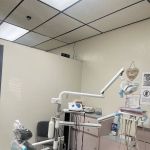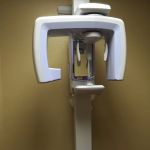
Essential Tips for Caring for Your Teeth After a Tooth Extraction
If you’ve recently had a tooth extraction, you might be feeling a little uncertain about the next steps in your recovery. As someone who’s gone through it myself, I can tell you that the process of healing after a tooth extraction can seem daunting at first. However, with the right care and attention, the healing process can be smooth and straightforward. Let me walk you through the best ways to care for your teeth and ensure that you recover properly.
1. Understanding the Healing Process After a Tooth Extraction
Before we dive into the specifics of post-extraction care, it’s important to understand what happens after a tooth is removed. Once the tooth is extracted, a blood clot forms in the socket to help protect the bone and nerve endings. This clot is essential for the healing process, and it helps to promote new tissue growth. If this blood clot is dislodged or disrupted, it can lead to complications like dry socket, which can cause severe pain and delay healing.
For me, the most important lesson after my tooth extraction was to be gentle with the healing site. I had to remember that the mouth is a sensitive area, and any sudden movement or pressure could disrupt the clot or irritate the healing tissue. It’s essential to take proper care of the area to avoid complications.
2. Immediate Care After the Extraction
The first 24 hours after your tooth extraction are crucial for a successful recovery. During this time, your body begins the initial healing process, and there are a few key things to keep in mind:
- Apply Gauze Pads: Your dentist will place gauze over the extraction site to help control bleeding. Keep the gauze in place for about 30 minutes to an hour after the extraction. If bleeding continues, replace the gauze until it stops.
- Use Ice Packs: Ice packs can help reduce swelling in the first 24 hours. Apply an ice pack to the outside of your cheek near the extraction site for 15-20 minutes at a time, making sure to give your skin a break in between.
- Avoid Spitting or Rinsing: While it may seem natural to rinse your mouth, avoid doing so for the first 24 hours. Spitting or rinsing vigorously can dislodge the blood clot and hinder the healing process.
I remember feeling nervous about bleeding, but my dentist reassured me that minor bleeding was normal in the first few hours. It was also helpful to stay seated upright for a few hours to minimize bleeding.
3. Managing Pain and Discomfort
After a tooth extraction, it’s normal to experience some discomfort and swelling. Fortunately, there are a few ways to manage these symptoms:
- Pain Medication: Your dentist will likely prescribe pain medication or recommend over-the-counter pain relievers, such as ibuprofen or acetaminophen. Be sure to follow the instructions carefully to manage your pain effectively.
- Saltwater Rinse: After the first 24 hours, you can start gently rinsing your mouth with warm salt water. This helps keep the area clean and promotes healing without irritating the extraction site.
- Eat Soft Foods: For the first few days, stick to soft foods like yogurt, mashed potatoes, and soup. Avoid hot, spicy, or crunchy foods that could irritate the extraction site.
I found that staying on top of pain management with the prescribed medication made a huge difference in my recovery. It helped me stay comfortable and avoid unnecessary swelling.
4. Avoiding Complications After Your Tooth Extraction
As I learned from my own experience, there are a few crucial steps to ensure that the healing process goes smoothly and avoid complications like dry socket:
- Avoid Smoking: Smoking can slow down the healing process and increase the risk of dry socket. The suction caused by smoking can dislodge the blood clot, so it’s best to avoid smoking for at least a few days after the extraction.
- Do Not Drink Through a Straw: The suction caused by drinking through a straw can also disrupt the blood clot. It’s best to avoid straws for at least a week after the extraction.
- Rest and Relax: Avoid strenuous physical activity for a few days after your extraction. Physical exertion can increase blood pressure and disrupt the healing process.
One of the most surprising things I learned during my recovery was how easy it is to disrupt the healing process without even realizing it. The best advice I can give is to follow your dentist’s instructions carefully and be patient as your body heals. For example, I was cautious not to chew on the side of the extraction site for several days, which helped avoid putting unnecessary pressure on the healing tissue.
5. Follow-Up Appointments and Long-Term Care
After a tooth extraction, it’s important to schedule follow-up appointments with your dentist. These visits allow your dentist to monitor your healing progress and ensure that everything is going as expected. My dentist also provided advice on what to do if I noticed any unusual symptoms, like increased pain or signs of infection.
As the site heals over the course of a few weeks, you’ll want to maintain good oral hygiene, but be gentle around the extraction site. Brush your teeth carefully, avoiding the immediate area of the extraction. Over time, you can resume your normal brushing routine, but it’s essential to continue following your dentist’s advice to prevent infection or complications.
6. Caring for the Extraction Site in the Weeks That Follow
After the initial few days of recovery, the extraction site will begin to heal, but you still need to be mindful of the following:
- Keep the Area Clean: Gently rinse with salt water after meals to help keep the site clean. Avoid vigorous rinsing, as it can disturb the blood clot.
- Monitor for Infections: Keep an eye out for signs of infection, such as increased pain, swelling, or a bad taste in your mouth. If you experience any of these symptoms, contact your dentist immediately.
In my case, the extraction site healed well after a few weeks, and I was able to resume normal eating and oral care. The process was much smoother than I had anticipated, and staying on top of aftercare was the key to a quick recovery.
How Dentistry Toothtruth Can Help
If you’ve recently had a tooth extraction or are planning one, I highly recommend reaching out to Dentistry Toothtruth for expert advice and care. They specialize in post-extraction recovery and can guide you through the process with the best aftercare tips to ensure a speedy recovery. Visit Dentistry Toothtruth today for more information on post-extraction care and other dental services.







 Zak Dental - Whittier4.0 (142 review)
Zak Dental - Whittier4.0 (142 review) Dr. Edward R. Haggerty Jr, DDS3.0 (7 review)
Dr. Edward R. Haggerty Jr, DDS3.0 (7 review) Pediatric Dentistry Kahala4.0 (23 review)
Pediatric Dentistry Kahala4.0 (23 review) Thai & Kiourtsis Orthodontics5.0 (66 review)
Thai & Kiourtsis Orthodontics5.0 (66 review) Tyler Dental Center5.0 (7 review)
Tyler Dental Center5.0 (7 review) Cal Dental of Van Nuys4.0 (109 review)
Cal Dental of Van Nuys4.0 (109 review) The Importance of Oral Health Education During Pregnancy for a Healthy Pregnancy
The Importance of Oral Health Education During Pregnancy for a Healthy Pregnancy Best Tips for Brushing Your Teeth Properly for Healthy Gums: Essential Techniques for Oral Health
Best Tips for Brushing Your Teeth Properly for Healthy Gums: Essential Techniques for Oral Health Why Skipping Dental Checkups Can Lead to Bigger Oral Health Problems
Why Skipping Dental Checkups Can Lead to Bigger Oral Health Problems Advantages of Porcelain Dental Restorations
Advantages of Porcelain Dental Restorations How Can Diabetes Cause Tooth and Gum Problems? Preventing and Managing Oral Health Issues
How Can Diabetes Cause Tooth and Gum Problems? Preventing and Managing Oral Health Issues Healthy Habits for Promoting Good Oral Health and Hygiene: Tips for a Healthy Smile
Healthy Habits for Promoting Good Oral Health and Hygiene: Tips for a Healthy Smile